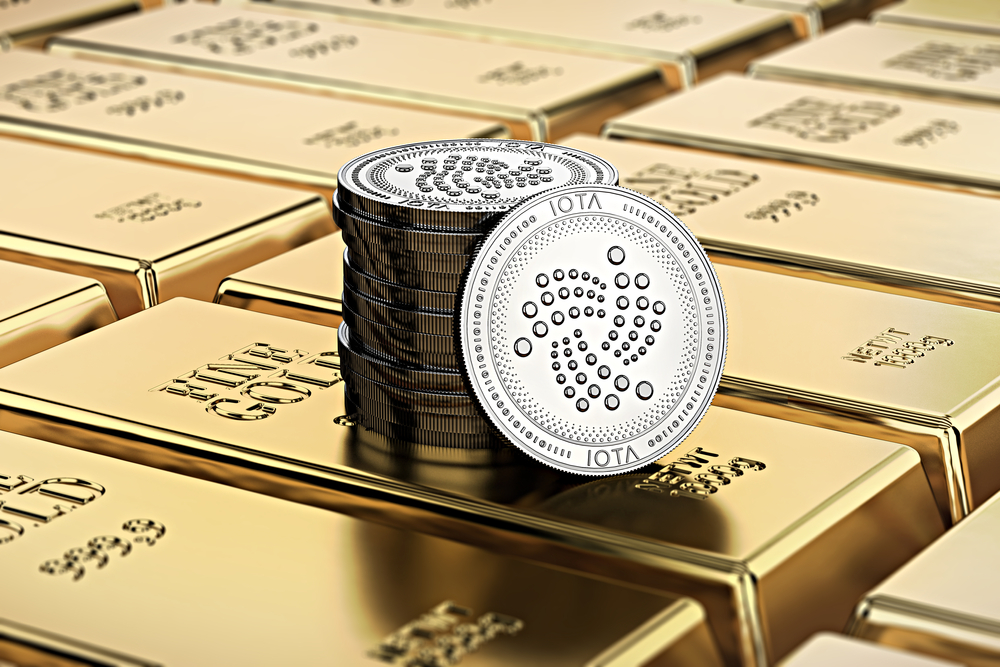The Internet of Things (IoT) stands out as the next breakthrough area in cutting-edge technology. IoT is rapidly becoming part of everyday life, integrating high-tech devices like smartwatches and health monitors into our daily routines. Within this context, blockchain technology is critical for enabling seamless machine-to-machine (M2M) and human-to-machine (H2M) interactions.
Traditional blockchain, while revolutionary, faces challenges with the sheer scale of microtransactions that IoT demands. IOTA emerges as a solution, transcending these limitations with its unique approach.
Leveraging a feeless and highly scalable structure known as the directed acyclic graph (DAG), IOTA presents a compelling alternative to traditional blockchain, specially tailored for IoT applications.
IOTA’s development trajectory took a bold step forward with the announcement of the IOTA Ecosystem DLT Foundation, a $100 million initiative based in Abu Dhabi, UAE.
Exploring the Versatility of IOTA
IOTA has carved out a niche in the digital ledger technology landscape with its groundbreaking directed acyclic graph (DAG) network, known for its free transactions, immense scalability, and the absence of traditional block mining.
Since its inception in 2016, IOTA has been heralded as the potential backbone of the Internet of Things (IoT), enabling the seamless transfer of minuscule data packets vital for the IoT ecosystem.
The use cases for IOTA are as diverse as they are impactful, with the platform unlocking new possibilities in various sectors:
Supply Chain Optimization: IOTA’s network offers a new level of transparency for supply chains, allowing various stakeholders to track and monitor the movement of goods with real-time updates from sensors and devices.
Smart City Infrastructure: Municipalities are turning to IOTA for smart city projects, utilizing its technology for improved traffic systems, efficient waste management, and enhanced public utility services. With cities like Taipei joining hands with IOTA, the platform is setting the stage for urban innovation.
Healthcare Data Integrity: In healthcare, IOTA supports the secure exchange of patient data, bolstering the reliability of medical records and enabling interconnected healthcare devices to execute transactions autonomously.
Microtransactions Between Devices: IOTA is instrumental in facilitating micropayments between IoT devices, a cornerstone functionality for the widespread adoption of IoT solutions.
IOTA’s Multi-Faceted Tokens: From MIOTA to IOTA 2.0
The IOTA Token
The digital asset native to the IOTA platform has seen a significant evolution. Originally known as MIOTA, the token underwent a rebranding to IOTA following the Stardust network upgrade in October 2023. The primary functions of the IOTA token encompass the storage and transfer of value, alongside facilitating the purchase of services and products, including valuable IoT data sets.
The Dawn of IOTA 2.0 and Expanded Token Utility
With the advent of IOTA 2.0, the token’s utility is poised for expansion. The introduction of a Proof of Stake (PoS)-inspired validation mechanism will enable IOTA’s use in staking and delegation processes. Notably, rewards for these activities will be disbursed in Mana, a new form of resource, rather than in IOTA tokens. Additionally, token holders are expected to wield governance influence over the network.
Tokenomics and Supply Changes
The initial supply of the token at its launch was approximately 2.8 billion. Post-upgrade, this supply increased to 4.6 billion, with a planned gradual release over four years, leading to an expected 12% annual inflation rate for the IOTA token in this period. Despite this, IOTA is designed as a deflationary asset with a capped supply, ensuring no additional tokens beyond the minted 4.6 billion will be created.
Shimmer (SMR)
Shimmer, a Layer 1 network birthed by IOTA, functions as an experimental platform for DApps destined for IOTA. Launched in September 2022, Shimmer shares IOTA’s DAG architecture, with its native SMR token facilitating transactions and DApp functionalities on the network.
Mana
In IOTA 2.0, Mana will serve as the reward mechanism for validators and stakeholders who delegate their IOTA tokens for block validation. While Mana is not classified as a cryptocurrency, its role is akin to that of loyalty points in a validation rewards system. Its management and integration within the IOTA ecosystem remain a topic of anticipation.
Looking Ahead
As IoT becomes increasingly pervasive, IOTA, especially in its 2.0 form, is set to play a pivotal role. As everyday objects from coffee makers to refrigerators become part of the interconnected web of internet-enabled devices, IOTA is anticipated to be a crucial facilitator of communication within this network.
